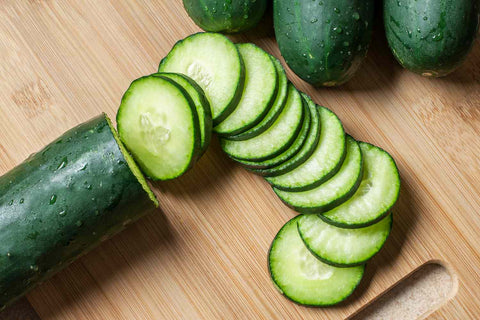Fertilizer application is more than just a routine task; it is an art and science that can significantly influence crop yield and quality. Advanced fertilizer techniques are essential for maximizing efficiency and sustainability in modern agriculture. This article delves into the sophisticated methods of fertilizer application, highlighting their importance and benefits.

Understanding the Importance of Advanced Fertilizer Techniques
Agricultural success hinges on nutrient management. Advanced fertilizer techniques allow for precise nutrient delivery, ensuring crops receive the exact nutrients they need when they need them. This precision not only boosts productivity but also reduces waste and environmental impact.
The Benefits of Optimized Fertilizer Use
Optimized fertilizer use translates into healthier crops, higher yields, and more robust plant growth. Moreover, it mitigates environmental issues such as nutrient runoff and soil degradation, promoting a sustainable farming ecosystem. By utilizing advanced techniques, farmers can achieve significant cost savings and improve their overall return on investment (ROI).
Soil Analysis and Testing
The Foundation of Effective Fertilization
Effective fertilization begins with understanding the soil. Soil analysis provides crucial information on nutrient levels, pH balance, and organic matter content, forming the basis for tailored fertilization strategies.
How to Conduct a Soil Test
Conducting a soil test involves collecting soil samples from various field locations, ensuring a representative analysis. These samples are then sent to a laboratory for detailed examination, revealing nutrient deficiencies and imbalances.
Interpreting Soil Test Results
Interpreting soil test results requires a keen understanding of soil chemistry. The results indicate the levels of essential nutrients such as nitrogen, phosphorus, and potassium. Farmers can use this data to adjust their fertilization plans, ensuring optimal nutrient availability.
Types of Fertilizers
Organic vs. Synthetic Fertilizers: Pros and Cons
Organic fertilizers, derived from natural sources, enhance soil structure and microbial activity. Synthetic fertilizers, on the other hand, provide precise nutrient formulations. While organics improve long-term soil health, synthetics offer immediate nutrient availability.
Understanding Slow-Release and Fast-Release Fertilizers
Slow-release fertilizers provide a steady nutrient supply over time, reducing the need for frequent applications. Fast-release fertilizers deliver nutrients quickly but require careful management to avoid nutrient leaching and runoff.
Specialty Fertilizers for Specific Crops
Specialty fertilizers are designed to meet the unique nutrient requirements of specific crops. These fertilizers often include micronutrients and tailored nutrient ratios, optimizing crop health and productivity.
Choosing the Right Fertilizer
Matching Fertilizer Types to Crop Needs
Different crops have distinct nutrient needs. Matching the right fertilizer type to the specific requirements of each crop is crucial for maximizing growth and yield.
Customized Fertilizer Blends
Customized fertilizer blends are formulated based on soil tests and crop requirements, providing a precise nutrient mix tailored to specific field conditions and crop stages.
Fertilizer Formulation for Different Growth Stages
Plants require different nutrients at various growth stages. Tailoring fertilizer formulations to these stages ensures that crops receive the necessary nutrients during critical periods of development.

Advanced Fertilizer Application Methods
Precision Agriculture: The Future of Fertilization
Precision agriculture uses technology to apply fertilizers with pinpoint accuracy. GPS-guided equipment and variable rate technology (VRT) enable precise application, minimizing waste and maximizing efficiency.
Foliar Feeding: When and How to Use It
Foliar feeding involves applying liquid fertilizers directly to plant leaves, providing a quick nutrient boost. It is particularly effective for correcting nutrient deficiencies during critical growth phases.
Fertigation: Combining Irrigation and Fertilization
Fertigation integrates fertilization with irrigation, delivering nutrients directly to plant roots through the irrigation system. This method ensures efficient nutrient uptake and reduces the risk of leaching.
Technology in Fertilizer Application
Using GPS and GIS for Precise Fertilizer Application
GPS and GIS technologies allow for precise mapping and application of fertilizers, ensuring even distribution and optimal nutrient use.
The Role of Drones in Modern Agriculture
Drones offer a bird’s-eye view of fields, helping farmers monitor crop health and identify areas needing additional nutrients. Drones can also be equipped to apply fertilizers in hard-to-reach areas.
Smart Sensors and Automation in Fertilizer Management
Smart sensors monitor soil nutrient levels in real time, providing data for automated fertilizer application systems. These systems adjust nutrient delivery based on current soil conditions, enhancing efficiency.
Timing and Scheduling
Developing a Fertilization Schedule
A well-planned fertilization schedule ensures nutrients are available when crops need them most. Timing applications to coincide with key growth stages maximizes effectiveness.
Understanding Crop Nutrient Uptake Patterns
Different crops absorb nutrients at varying rates. Understanding these uptake patterns allows for precise timing of fertilizer applications, optimizing nutrient availability.
Adjusting Fertilization Based on Seasonal Changes
Seasonal changes affect nutrient availability and crop needs. Adjusting fertilization practices to account for these changes ensures consistent crop health and productivity.

Application Equipment and Tools
Choosing the Right Equipment for Your Farm
Selecting the appropriate equipment for fertilizer application depends on farm size, crop types, and specific field conditions. The right tools enhance application efficiency and accuracy.
Calibration and Maintenance of Fertilizer Spreaders
Regular calibration and maintenance of spreaders ensure even fertilizer distribution. Proper upkeep extends equipment lifespan and prevents costly application errors.
Innovations in Fertilizer Application Tools
Modern tools, such as pneumatic spreaders and injection systems, offer precise control over fertilizer application, improving efficiency and reducing labor costs.
Environmental Considerations
Minimizing Runoff and Leaching
Advanced application techniques minimize nutrient runoff and leaching, protecting water quality and reducing environmental impact.
Sustainable Fertilization Practices
Sustainable practices, such as using organic fertilizers and cover crops, enhance soil health and biodiversity, promoting long-term agricultural sustainability.
The Impact of Fertilizers on Soil Health
Excessive fertilizer use can degrade soil health over time. Balanced fertilization practices maintain soil structure and microbial activity, supporting sustainable crop production.
Nutrient Management Strategies
Balancing Macro and Micronutrients
Effective nutrient management involves balancing macronutrients (N, P, K) with essential micronutrients (Zn, Fe, Mn) to support overall plant health.
The Role of Secondary Nutrients in Crop Growth
Secondary nutrients, such as calcium, magnesium, and sulfur, play vital roles in plant development. Ensuring adequate levels of these nutrients supports optimal growth.
Implementing Integrated Nutrient Management
Integrated nutrient management combines organic and inorganic fertilizers to optimize nutrient availability and enhance soil health, supporting sustainable crop production.
Fertilizer Compatibility
Avoiding Fertilizer Interactions
Some fertilizers can interact negatively when mixed. Understanding these interactions helps prevent nutrient imbalances and crop damage.
Mixing Fertilizers Safely
Safe mixing practices ensure fertilizers retain their efficacy and do not cause harm to crops or soil.
Managing Fertilizer Storage
Proper storage of fertilizers prevents contamination and degradation, ensuring they remain effective when applied.

Economic Aspects of Fertilization
Cost-Benefit Analysis of Advanced Fertilizer Techniques
Conducting a cost-benefit analysis helps determine the economic viability of advanced fertilization methods, guiding investment decisions.
Budgeting for Fertilizer Expenses
Effective budgeting ensures sufficient funds are allocated for fertilizers, balancing cost with crop needs and expected returns.
Increasing ROI with Efficient Fertilizer Use
Efficient fertilizer use maximizes ROI by enhancing crop yield and quality while minimizing input costs.
Regulatory and Safety Considerations
Understanding Fertilizer Regulations
Compliance with fertilizer regulations ensures safe and responsible use, protecting both the environment and crop health.
Safe Handling and Application of Fertilizers
Proper handling and application techniques prevent accidents and reduce the risk of environmental contamination.
Training and Education for Safe Fertilizer Use
Ongoing training and education programs promote safe and effective fertilizer use, enhancing overall farm productivity.
Common Fertilization Mistakes to Avoid
Over-Fertilization and Its Consequences
Over-fertilization can lead to nutrient runoff, soil degradation, and reduced crop quality. Avoiding this mistake is crucial for sustainable farming.
Signs of Under-Fertilization
Recognizing signs of under-fertilization, such as stunted growth and yellowing leaves, allows for timely corrective measures.
Troubleshooting Fertilizer Application Issues
Addressing application issues, such as uneven distribution and equipment malfunctions, ensures consistent and effective fertilization.
Fertilizer Application in Different Cropping Systems
Fertilization Techniques for Row Crops
Row crops require precise fertilization techniques to ensure even nutrient distribution and optimal growth.
Specialized Fertilization for Greenhouses
Greenhouse crops benefit from tailored fertilization strategies, including controlled-release fertilizers and hydroponic solutions.
Fertilizer Management in Organic Farming
Organic farming relies on natural fertilizers and soil amendments, requiring unique management practices to maintain soil health and fertility.

Crop-Specific Fertilization Tips
Best Practices for Fertilizing Vegetables
Vegetables have diverse nutrient needs, requiring careful selection and timing of fertilizer applications to maximize yield and quality.
Advanced Fertilization for Fruit Trees
Fruit trees benefit from slow-release fertilizers and micronutrient supplements, supporting robust growth and abundant fruit production.
Optimizing Fertilizer Use for Grain Crops
Grain crops require balanced fertilization strategies to ensure high yields and grain quality, with particular attention to nitrogen management.
Monitoring and Adjusting Fertilization Programs
Using Plant Tissue Testing
Plant tissue testing provides real-time data on nutrient uptake, guiding adjustments to fertilization programs for optimal crop health.
Making Mid-Season Fertilization Adjustments
Mid-season adjustments ensure crops receive the necessary nutrients during critical growth stages, enhancing yield and quality.
Continuous Improvement in Fertilizer Management
Ongoing evaluation and refinement of fertilization practices promote continuous improvement and adaptation to changing field conditions.
Future Trends in Fertilization
Emerging Technologies in Fertilizer Application
Emerging technologies, such as precision application tools and smart sensors, are revolutionizing fertilizer management, offering new levels of efficiency and accuracy.
The Role of Data Analytics in Fertilizer Management
Data analytics provides valuable insights into nutrient management, helping farmers make informed decisions and optimize fertilization practices.
Predictive Models for Fertilizer Needs
Predictive models use historical data and current field conditions to forecast nutrient requirements, enabling proactive and precise fertilization.
Advanced fertilizer techniques are crucial for modern agriculture, offering numerous benefits in terms of efficiency, sustainability, and productivity. By embracing these methods, farmers can ensure their crops receive optimal nutrition, promoting healthy growth and bountiful harvests. Continuous learning and adaptation are key to staying ahead in the ever-evolving field of fertilizer application. The future of agriculture lies in innovative, data-driven approaches that enhance both crop production and environmental stewardship.









